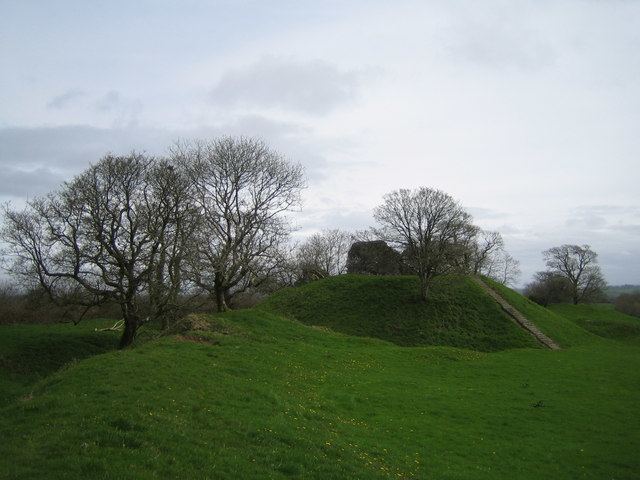 | ||
Hours Closed now Tuesday10AM–4PMWednesday10AM–4PMThursday10AM–4PMFriday10AM–4PMSaturday10AM–4PMSunday10AM–4PMMonday10AM–4PMSuggest an edit Similar Llawhaden Castle, Narberth Castle, Tenby Castle, Manorbier Castle, Picton Castle | ||
Wiston castle pembrokeshire
Wiston Castle (Welsh: Castell Cas-wis) is a motte and bailey castle in the Pembrokeshire village of Wiston in south west Wales. The castle and village were founded by Wizo, a Flemish settler who was granted the land by Henry I of England after he had wrested control from the previous Welsh owners. The castle was captured by the Welsh on several occasions but on each occasion it was retaken. It was abandoned during the thirteenth century when the owner moved to nearby Picton Castle and is one of the best examples of its type in Wales. The castle is situated opposite St Mary Magdalene Church and there are approximately 75 steps leading up to it. It is in the care of Cadw and is a Grade I listed building.
Contents
History
Until the late eleventh century, this part of southwestern Wales was part of the Welsh kingdom of Deheubarth. After the death in 1093 of the king of Deheubarth, Rhys ap Tewdwr, in the Battle of Brecon, the Normans took advantage of the lack of leadership among the Welsh. and the English forces seized much of South Wales. To supplement their castle with its garrison at Pembroke and consolidate his territory newly acquired from the Welsh, Henry I of England sought to colonise the surrounding area by settling Flemish in Rhos and Deugleddau, in the neighbourhood of Haverfordwest. One of these Flemish barons was named Wizo, and he was granted land that had previously belonged to a Welsh lord, and on wthis he built Wiston Castle. The name of the castle derives from his name. In 1147, the Welsh led by Hywel ab Owain captured Wiston, now under control of Wizo's son Walter fits Wizo, but the Flemings soon got it back. In 1193, it was captured by the Welsh again, and on this occasion it took two years before the Flemings recovered their property. Wizo was an entrepreneur and encouraged others from his country to relocate to Wales, and by 1211, a church and borough had been established at Wiston. This was a deliberate policy of Henry I designed to help him maintain control in Wales. Wizo was later to do a similar colonisation in Lanarkshire in Scotland. In Pembrokeshire, the Flemings maintained their culture and were an identifiable group for at least a century.
The castle was demolished in 1220 by Llywelyn the Great but restored by William Marshall the younger, Earl of Pembroke. Although exactly what happened after 1220 is unclear, the castle was abandoned while in an intermediary building stage; the original towers had been built of wood and the new, unfinished structures were built of stone, and show the original features without embellishments. The shell keep on the summit of the Motte is typical of the Norman stonework of the time. The castle was abandoned after Sir John Wogan moved to the nearby Picton Castle at the end of the 13th century.
During the English Civil War some four centuries later in 1643, the Royalists established a small outpost at Wiston, perhaps in the abandoned motte. They withdrew without an engagement taking place when, during the following year, parliamentary troops, led by Major-General Rowland Laugharne, advanced into the area. However, soon afterwards there was a pitched battle and the Royalists were defeated at the Battle of Colby Moor, just south of Wiston.
The site
Wiston Castle is considered one of the best preserved motte-and-bailey castles in Wales. It is built on the summit of a hill to the north of Wiston with the motte about 9 m (30 ft) above the base of the ditch. Surrounding the flat top there is a shell-keep that would have been the main fortification inside which all the buildings, mostly made of timber, would have been placed. The external face of the shell-keep is polygonal, with eighteen short sections, but some of these have subsided into the ditch on the north side. The inside of the shell-keep is circular. There is an arched entrance on the south side and on either side of this there are draw-bar holes which would have been used to secure the main gate. Inside is a large, oval bailey protected by a well-preserved bank. The lord's main residence would have been inside the bailey.
The castle is a Grade I listed building. It is maintained by Cadw and is open throughout the year free of charge. There is a small car park nearby but no visitor facilities.
